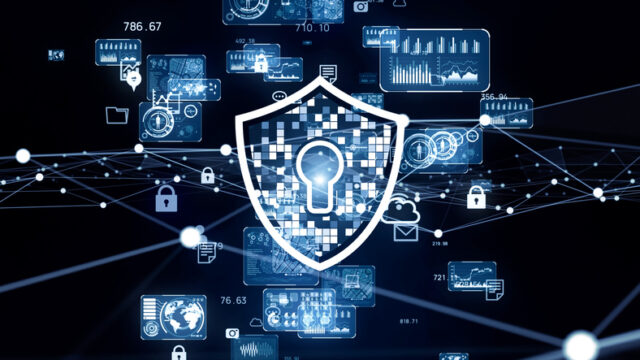
In our interconnected world, network security analysis stands as a crucial shield against an array of cyber threats that have the potential to wreak havoc on personal, corporate, and even national levels. The importance of network security analysis cannot be overstated. It’s the practice of assessing and fortifying computer networks against vulnerabilities, ensuring the confidentiality, integrity, and availability of data. This blog post delves into the realm of network security, unraveling common threats, revealing malware’s disguises, exploring phishing’s cunning techniques, dissecting DDoS attacks, scrutinizing data breaches, outlining safeguarding measures, underlining the role of employee awareness, highlighting incident response planning, envisioning emerging threats, and concluding with the call for continuous vigilance.
Common Threats: Unmasking Cyber Perils

Malware, phishing, Distributed Denial of Service (DDoS) attacks, and data breaches are recurring nightmares in the realm of network security. Malware, short for malicious software, infiltrates systems with malicious intent. It encompasses viruses, worms, ransomware, trojans, and spyware. Phishing, on the other hand, capitalizes on human susceptibility, tricking individuals into revealing sensitive information. DDoS attacks flood networks with traffic, crippling their functionality. Data breaches expose confidential information, leading to privacy breaches, identity theft, and financial loss.
Malware: Stealthy Intruders of the Digital World
Within the malware realm, various malevolent entities lurk. Viruses attach themselves to legitimate files, spreading their infection upon execution. Worms self-replicate and spread across networks. Ransomware encrypts data, holding it hostage until a ransom is paid. Trojans disguise themselves as benign software while carrying malicious payloads. Spyware clandestinely monitors activities, compromising privacy. Understanding these forms is crucial for effective mitigation.
Phishing: The Art of Deception

Phishing employs deception to manipulate human psychology. It encompasses techniques like email phishing, where seemingly legitimate emails contain malicious links or attachments. Spear-phishing targets specific individuals, tailoring messages for higher success rates. Social engineering preys on human trust and gullibility. Prevention involves robust email filters, cybersecurity training, and cautious internet behavior.
DDoS Attacks: Overwhelming Networks
Distributed Denial of Service (DDoS) attacks pose a menacing threat, orchestrating massive network disruptions. These attacks leverage an army of compromised devices to flood targeted networks with an avalanche of traffic, rendering them incapacitated. Employing various methods like volumetric attacks, protocol exploits, and application-layer onslaughts, DDoS attackers exploit vulnerabilities and bottlenecks in network infrastructure. The impact can be devastating – disrupted services, financial losses, and tarnished reputation. To defend against DDoS attacks, organizations need robust traffic analysis tools, scalable network architecture, and the ability to distinguish legitimate from malicious traffic. Swift mitigation strategies are paramount to ensure uninterrupted network functionality and avert crippling consequences.
Data Breaches: When Confidentiality Falters

Data breaches compromise sensitive information, leading to severe consequences. Causes include weak passwords, unpatched software, and insider threats. The aftermath involves reputation damage, legal ramifications, and financial losses. Protecting sensitive data requires encryption, access controls, and regular security audits.
Safeguarding Measures: Building Digital Fortresses
Safeguarding measures, as an integral part of network security analysis, fortify networks against threats. Encryption plays a pivotal role in encoding data, rendering it unreadable without the appropriate decryption key. Firewalls, the guardians of digital borders, meticulously monitor and control incoming and outgoing network traffic. Working hand-in-hand, Intrusion Detection Systems (IDS) act as vigilant sentinels, identifying unusual behavior and triggering alerts. Adding an extra layer of security to user access, multi-factor authentication bolsters defenses. In the intricate realm of network security analysis, these measures combine to create an intricate web of protection, defending against the ever-evolving landscape of cyber threats.
Employee Awareness: The Human Firewall

In the realm of cybersecurity, employees are both the first line of defense and a potential vulnerability. Their awareness and vigilance are the pillars of a strong human firewall that can thwart cyber threats. By providing comprehensive cybersecurity training, organizations empower employees to recognize phishing attempts, suspicious activities, and social engineering tactics. A vigilant workforce not only prevents breaches but also serves as an early warning system, reporting potential threats promptly. Promoting a culture of cybersecurity consciousness involves ongoing training, simulated phishing exercises, and clear reporting channels. When employees understand their pivotal role in safeguarding sensitive data, they become an invaluable asset in the battle against cybercrime, transforming from potential weak points into the most robust line of defense.
Incident Response Planning: Navigating Choppy Waters
In the tumultuous sea of cybersecurity, incident response planning stands as a lighthouse guiding organizations through treacherous waters. Breaches are inevitable, but how swiftly and effectively an organization responds can mean the difference between a minor disruption and a catastrophic breach. Incident response involves a well-orchestrated sequence of actions: detection, containment, eradication, recovery, and analysis. By promptly identifying the breach’s scope, isolating affected systems, eradicating the threat, recovering lost data, and conducting a thorough post-incident analysis, organizations can minimize damage and prevent future recurrences. A comprehensive incident response plan should be dynamic, adaptable to evolving threats, and well-communicated to all stakeholders. In a digital landscape where storms are frequent, a robust incident response plan is the lifeboat that ensures continuity and resilience.
Emerging Threats: Peering into the Future

As technology evolves, so do the threats that exploit it. The Internet of Things (IoT) has brought convenience to our lives, but it has also opened new avenues for cybercriminals. Vulnerabilities in smart devices can lead to breaches of personal data, intrusion into homes, and even manipulation of critical infrastructure. Imagine a scenario where a hacker gains control over smart city systems or medical devices – the consequences could be dire.
Artificial Intelligence (AI) brings remarkable potential, but it’s a double-edged sword. AI-driven attacks leverage machine learning to identify vulnerabilities, adapt to defenses, and launch precise strikes. These attacks can evolve rapidly, outpacing traditional security measures. As AI becomes more integrated into our lives, so too will AI-driven threats.
Securing Future Networks: A Collaborative Effort
Securing the networks of tomorrow requires a multifaceted approach. It’s not just about deploying cutting-edge technology; it’s about collaboration between governments, industries, and individuals. Regulatory frameworks must evolve to keep pace with technology. Organizations need to prioritize security in their products and services, integrating it from the ground up.
Individuals also play a crucial role. Cyber hygiene, including regular software updates, strong and unique passwords, and cautious online behavior, remains fundamental. As technology advances, so should our awareness and education about potential threats.
Conclusion: The Journey Continues
In the dynamic landscape of cyberspace, the journey to safeguarding networks and data is unending. Network security analysis is not a destination; it’s a continuous process. The threats may evolve, but so do the strategies to counter them. Each innovation in technology introduces a new challenge, but also an opportunity to reinforce our defenses.






